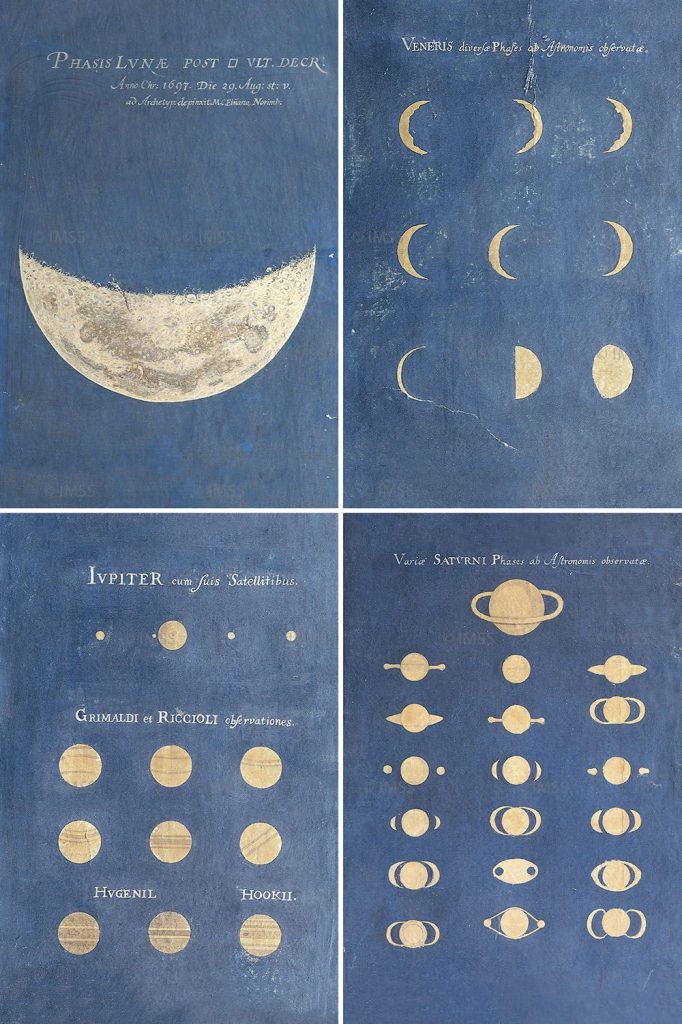Pupils bring home their Moon books, so that they can keep track of the Moon over four weeks. The task of keeping a daily track of one’s own observation of the Moon helps pupils notice and get curious about what is happening in the sky.

Before pictures, illustrations : Maria Clara Eimmart draws the Moon (1697). Some of her works, shown below, can be seen at the “Museo della Specola” (Observatory Museum) in Bologna.
In their Moon exercise books, pupils wrote down time and date of each observation, drew the Moon in case they could see it, and recorded as many details as possible about the sky (for example the color). They also wrote down all the questions which came to mind, as for instance: “Why were there no stars tonight?”
Twice, during this month of observation, pupils shared their Moon diaries with their classmates, through a “gallery walk”, namely a walk along school desks, as if it were a gallery, so as to take inspiration from their peers, and keep improving their scientific observation skill.
We prepared the instruction for the pupils together with a few primary school teachers. Obviously, these instructions can be customized and adapted to individual situations.
We shall observe the Moon for 4 weeks, starting from tonight!
In your Moon diary, you will make observations on the Moon if possible every evening for 4 weeks. Here are the instructions to help you make your observations as much useful and significant as possible:
1. Record date and time of each observation. Record whereabouts in the sky you can see the Moon.
2. Draw the Moon just as you see it: what does it look like? What’s its shape? Where is it in the night sky? Add colour and shades to your drawing: looking carefully at the night sky will guide you in choosing the right artistic materials you can use: water colours, chalk, pastels, colored pencils, and so on. Is the sky dark, or lit by Moonlight? Can you see some stars, or planets? Is the sky clear, or is it a foggy, rainy or cloudy night? Over and above the Moon, draw any other object you can see in the sky. Add labels or a short explanation to your drawings, if you think they can be useful.
3. Pay attention to other night marvels. What do you hear? Birds? Cars, or airplanes? Raindrops, or wind? Can you smell trees, or smoke from a fire? Write down what you notice.
4. Just as observations, the questions coming to mind are also important, following your work. Make sure you record what you want to know. Your questions will help us get to know the Moon better, together with the night sky and … who knows what else? Your diary is a place full of discoveries, a place where you can look and expect a surprise.
Look at the sky, focus your attention upon the Moon, and let your diary begin!
